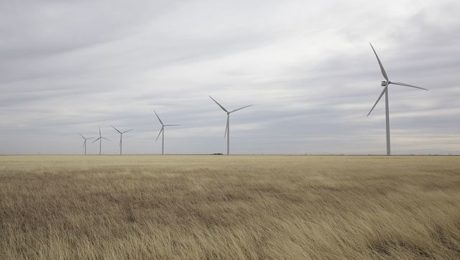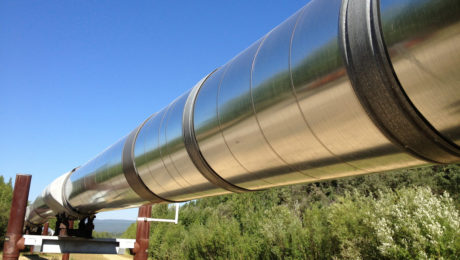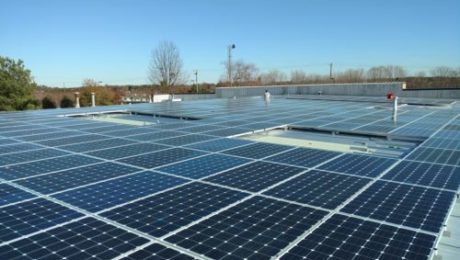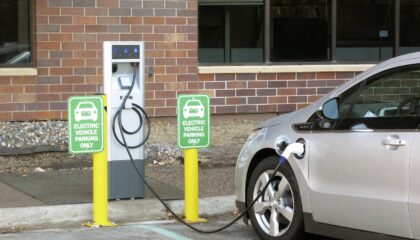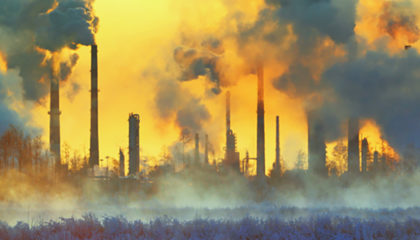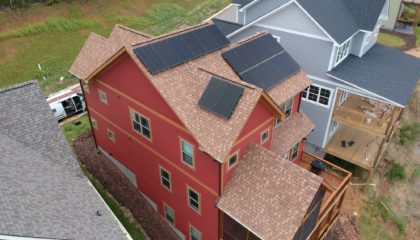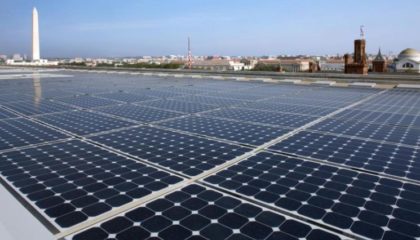Trash to Solar
As the need to distance ourselves from fossil fuels becomes more urgent due to climate change and pollution in general, solar power is emerging as a leading alternative. It can be scaled to be used by individuals or large utilities; and best of all- it’s renewable. However, large scale solar farms require large tracts of land that have long and regular periods of sunlight. Suitable areas can usually be found in many rural settings and deserts, but transferring that energy over lengthy power lines to more populated areas can be expensive and inefficient.
A new trend is emerging that seems like a promising answer to this inconvenience – building on retired landfills! When a landfill is full it is covered with a polyethylene cap, a thin layer of soil, and finally grass. Despite it’s more pleasing aesthetics, this brownfield ground is still mostly unusable as it is unstable and not suitable for building large structures. Because of the gasses and toxins emitted by the covered landfill the growing of crops is also not a viable option. However, this acreage is perfect for large scale solar farms. Ballasted anchors are used to stabilize the solar array to avoid penetrating the landfill cap. This specialized racking system allows for thousands of solar panels to be installed on this otherwise unusable land; producing a lot of clean, renewable energy.
Landfills are typically built outside of, but close to, city limits and already have access to the power grid. This makes transporting energy for use in more densely populated areas much easier. Right now, there is an estimated 10,000 capped landfills in the US alone, and that number is only growing. The construction of large solar farms would not only positively impact the environment, it would create thousands of well-paying and sustainable jobs on land that is otherwise sitting unused.
- Published in Climate Change, Solar Energy, Solar News, Solar Technology
Craft Brewers Going Solar
Craft brewers love to sell themselves as environmental activists. How can you tell a sincerely sustainable business from those looking for a selling point? One answer, solar.
The Relationship Between Brewers and Environmentalism
Millennials love craft brewers, and craft brewers are very aware of what the Pew Research Center found in 2014. Millennials look for socially and environmentally responsible businesses and are willing to pay more for sustainable products.
As Millennials are the biggest generation, marketing to them is important. Having a green (or green-washed) business brings in customers excited to support an environmentally-friendly organization.
Craft brewers also must combat the fact that they are a water-intensive industry; a gallon of beer from an average brewery requires seven gallons of water. While most customers would still drink their favorite brew despite the water consumption, water availability and quality are growing environmental concerns directly affecting and affected by breweries. An organization marketing to an environmentally-conscious generation needs to balance environmental cons with environmental pros.
Follow the Money
While craft brewers modify their businesses and processes in a variety of ways to become more sustainable, a customer dedicated to finding the most sustainable beer needs only to follow the money. Businesses who make investments in environmentally-conscious practices are using part of their profits for a greater cause.
A great way to invest in the environment is installing solar arrays. Of the 6,000 American craft breweries, only 100-150 have solar arrays, and ten of those call North Carolina home.
Check out some local breweries going beyond greenwashing
SolFarm Solar Co. has installed solar energy systems at Apothecary Beverage and Buchi Kombucha. Visit their sites to learn more about their brands.
- Published in Climate Change, Solar News, Solar Technology
Solar Trumps Coal Environmentally and Economically
In a competitive market, coal is more expensive than both solar and wind.
In 2001, Texas created a competitive electricity market in that the least expensive resources go on the grid first. At that time, wind supplied less than one percent of Texas’ energy. As of 2018, 20 percent of the market is wind power. With technology and increased production lowering the cost of renewables, there are less arguments, than ever before, for the steady destruction of mountainous landscapes created by America’s need for coal.
Due to the competitive market, Texas has retired coal-fired plants, replacing them with natural gas which is significantly less expensive. By the end of next year, wind is expected to generate more electricity for Texans than coal as more plants are retired. However, these retired plants are largely being replaced by more efficient and less expensive natural gas plants. While natural gas beats coal in an environmentally-friendly competition, it is still a fossil fuel.
Texas’ competitive electricity market creates a fairer fight between renewables and fossil fuels when compared to other state and federal energy policies. Still, fossil fuels have an advantage. The hidden costs related to fossil fuel use like the consequences of climate change, explosions during drilling, transportation, spills and leaks, or burning process, and the pollution of land surrounding gas wells, is not included in the price comparisons of natural gas and renewables.
However, there is still hope. As we continue to burn the finite source of natural gas, it will face the same, inevitable dilemma of oil and coal. The low hanging fruit will be harvested, and the remaining sources will be difficult, dangerous, and expensive to gather while the cost of renewable energy continues to plummet. Someday, the market will favor it.
Will the invisible hand of the free market move soon enough? Don’t wait to see. Ease America’s dependency on fossil fuels by making a personal change in your energy source. Contact SolFarm Solar Co to see what you can do to save the planet.
- Published in Climate Change, Policy, Solar Energy, Solar News, Solar Technology
Environmental Activist Desperate for Change
In their criminal trial, activists argue they had no choice but to trespass and stop oil pipelines.
What Happened
The four activists trying to turn of the pipelines in Minnesota planned to let the world know what they accomplished. A film crew followed them to the pipeline. They knowingly risked being arrested. Similarly minded individuals consider turning off the pipeline to be civil disobedience. Just as members of the Civil Rights Movement risked arrest. The activist believe inspiring others and bringing attention to the cause is worth the risk.
What They’re Arguing
The activists presented a necessity defense earlier this year, arguing they exhausted all legal tactics to stop climate change. Prosecutors challenged the judge’s decision to allow the activists to use a necessity defense, but the Minnesota Court of Appeals dismissed it in late April.
Other less extreme tactics have not been effective in stopping governments and corporations from using fossil fuels. Demonstrations, documentaries, and non-profit organizations prove to be poor weapons against policy and industry. In the minds of the organizers behind the protest, climate change is an emergency that will not wait on slow-moving legislation or reluctant corporations.
Prosecutors and stakeholders against the activists expressed concern about other activists being encouraged to commit more crimes. In response, one of the defendants said she hoped others would be inspired to participate in future acts of civil disobedience.
Chances of success
One of the activists’ cohorts was unable to use the necessity defense. His judge believed he was using his case as an opportunity to put energy policy on trial. However, the four activists being tried in Minnesota now have permission to use the necessity defense. The necessity defense has succeeded in the past. Charges against activists in Massachusetts were dismissed. Perhaps these activists will find the same outcome.
- Published in Uncategorized
Industry Starts to See the (Sun)light
Industries are starting to see the light when it comes to climate change. Whether something is being done or not… depends on the company.
Ceres, a sustainability advocacy group performed an analysis of the largests companies in the US spectrum. With over 600 companies included, industries range from agriculture to retail to technology. The report is well-rounded, allowing anyone to check out the environmental performance of 10 different industries. Generally, the more climate change is threatening an industry’s business, the more action it is taking to prevent it.
Who is Doing What?
Ceres gathered and published company scorecards, ranking each company in Tier One, Two, Three, or Four. A company in Tier Four is just starting an sustainable practice while a company in Tier One is leading the pack. Ceres measured companies in different types of accountability and performance. Accountability includes disclosure, dialogues with stakeholders, and management accountability. Performance includes renewable energy, policies, transportation, and diversity.
Improvements… of a sort
Comparing Ceres’ 2014 findings to their 2017 findings illustrates a general increase in practices encouraging sustainability. It appears, at least on the surface, corporations are starting to get their act together. Sixty-four percent of the groups Ceres studied pledged to reduce greenhouse gas emissions and one-third of the companies have made commitments to add renewable energy to their processes. However, only 36 percent of company had pledges with deadlines, and only nine percent had science-based goals aligning with Paris climate agreement’s goal to stop global warming at two degrees.
Changing corporate policy and practice will be the key to effectively mitigating climate change. The advances made in the last few years are promising, but not nearly enough. Corporations need to continue seeking ways to be sustainable, and a great way to start is exploring solar energy. SolFarm would love to help.
To explore Ceres’ detailed report yourself, check out:
https://www.ceres.org/resources/roadmap-for-sustainability/report-key-findings
and
https://www.ceres.org/resources/roadmap-for-sustainability/company-scorecards
- Published in Uncategorized
Wake-up Call: Last Male Northern White Rhino Dead
Sudan, the last Northern White Rhino male, died yesterday.
Conservationists expected the death. Sudan, an elderly rhino, developed an infection on his back leg. He leaves the last two Northern White Rhinos, two females, behind. Sudan and the two remaining females were unable to produce children. However, scientists harvested sperm and eggs. Hopefully, conservationists successfully use IVF to bring the species back someday, using Southern White Rhinos as surrogates.
The Northern White Rhino is the second rhino species to face almost certain extinction. The Western Black Rhino went extinct in 2013. One thousand Eastern Black Rhino currently roam Kenya, Rwanda, and Tanzania. Outside of rhinos, seven species are thought to be extinct all over the world. As of 2017, 27 new species are considered possibly extinct or extinct in the wild. With species smaller and less researched than rhinos, it is hard to tell when a species is truly extinct.
The IVF procedure is not guaranteed to work, and it will cost more than nine million dollars. Bringing the Northern White Rhino back is much more expensive than protecting it in the first place would have been. For almost every species, the cost of prevention is much cheaper than what it takes to turn back the clock.
What We Can Do About It
This should be a wake-up call. While poachers threaten rhinos the most, other species disappear forever because of climate change and the pollution caused by the extraction and burning of fossil fuels. As temperatures rise around the world, ecosystems working seamlessly for thousands and millions of years are starting to unravel. As oceans warm, acidify by absorbing increasing amounts of carbon dioxide, and are over-fished, aquatic species disappear. As ice caps melt, islands and coastal regions are flooded, unique ecosystems are ruined.
Solar is part of the solution to save the world. The investment into a solar array not only shrinks a power bill, it helps protect the organisms we share this earth with. Do your part today.
Keep Reading:
National Geographic: After Last Male’s Death, Is the Northern White Rhino Doomed?
2017 Possibly Extinct and Possibly Extinct in the Wild Species Table
- Published in Uncategorized



